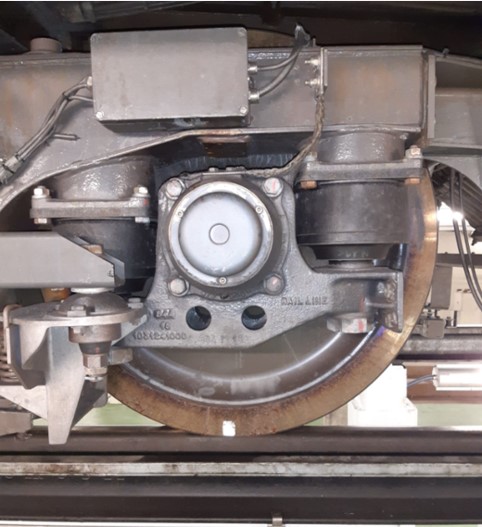Metro noise and vibrations
Latest updates for residents living near the metro
Since the first complaints regarding metro-related vibrations were reported, STIB has launched a series of actions to understand the causes of these disturbances and to implement both short- and medium-term solutions. Our goal remains to reduce noise and vibration levels to what they were previously, when only M6 rolling stock operated on the line.
This strategy is still ongoing. At the same time, corrective maintenance operations continue across the network: detection of defective wheels, intensified rail grinding, and reinforced maintenance of metro trains.
Cause and possible solutions
Along certain sections of the metro line, several nearby residents have reported low-frequency noise and vibrations felt within buildings located close to the metro infrastructure. To objectively assess the situation, STIB-MIVB conducted a series of measurements on both the infrastructure and rolling stock.
These analyses revealed:
- Abnormal wear on certain sections of track, particularly in the form of corrugation;
- Premature ovalisation of certain wheels on the new M7 trains, caused by a manufacturing defect.
These deformations result in vibrations that can be felt in nearby buildings. The characteristics of the ground or building foundations can amplify these effects.
Measures Taken on the rails
- Enhanced rail grinding: The network is regularly maintained using a rail grinding train ("Speno"). In response to the observed irregular wear, the grinding schedule has been intensified and focused on the most affected sections.
- Testing of under-rail pads (June 2023): In collaboration with an engineering consultancy, a new type of under-rail pad (suspension system) was installed beneath the rails between Gribaumont and Joséphine-Charlotte stations. The objective: to limit the development of rail corrugation. Results so far have been mixed, with no significant improvements observed in ground-borne noise or vibrations. Monitoring is ongoing
Measures taken on the wheels
- Automatic detection of ovalised wheels: At Maelbeek station, a detection system was installed to identify ovalised wheels. However, detection occurs after the fact, meaning the problematic wheels have already generated vibrations by the time they are identified.
- Wheel re-profiling (underfloor lathe): Deformed wheels are machined to restore their round shape. However, due to the manufacturing defect, ovalisation reappears quickly. This is therefore only a temporary solution.
- Replacement with in-stock wheels (2023): STIB-MIVB replaced the 16 most problematic wheels with available units from its existing stock.
- Order of new wheels and quality testing (late 2023 – early 2024): In collaboration with the manufacturer, STIB-MIVB received an initial batch of newly produced wheels. Four of these were subjected to tests which confirmed they met the technical specifications. Consequently, 16 defective wheels were replaced in early 2024. These new wheels underwent observation over a distance of 80,000 km to assess their durability.
Development of New Wheel Tyres (2024–2025)
Meanwhile, the manufacturer continued research to develop new wheel tyres that meet STIB-MIVB’s specifications and aim to permanently resolve the premature ovalisation issue. (note: these are metalic parts that constitute the outer part of the metrowheel, not rubber tyres)
One M7 train was fitted with these new tyres, which were then compared with:
- The original wheels (which had shown deformation);
- The wheels from M6 trains (a reliable reference point).
The observation period was long enough to allow the manufacturer to confirm that the new tyres met the strict technical criteria.
Production and delivery: the manufacturer has begun manufacturing the new tyres. Delivery is expected in the final quarter of 2025.
Gradual replacement: Installation of the new tyres on M7 bogies will follow. This is an industrially complex operation that will be phased over several months, prioritising the most affected trains.
We remain hopeful that a significant improvement will be noticeable from summer 2026 onwards.
